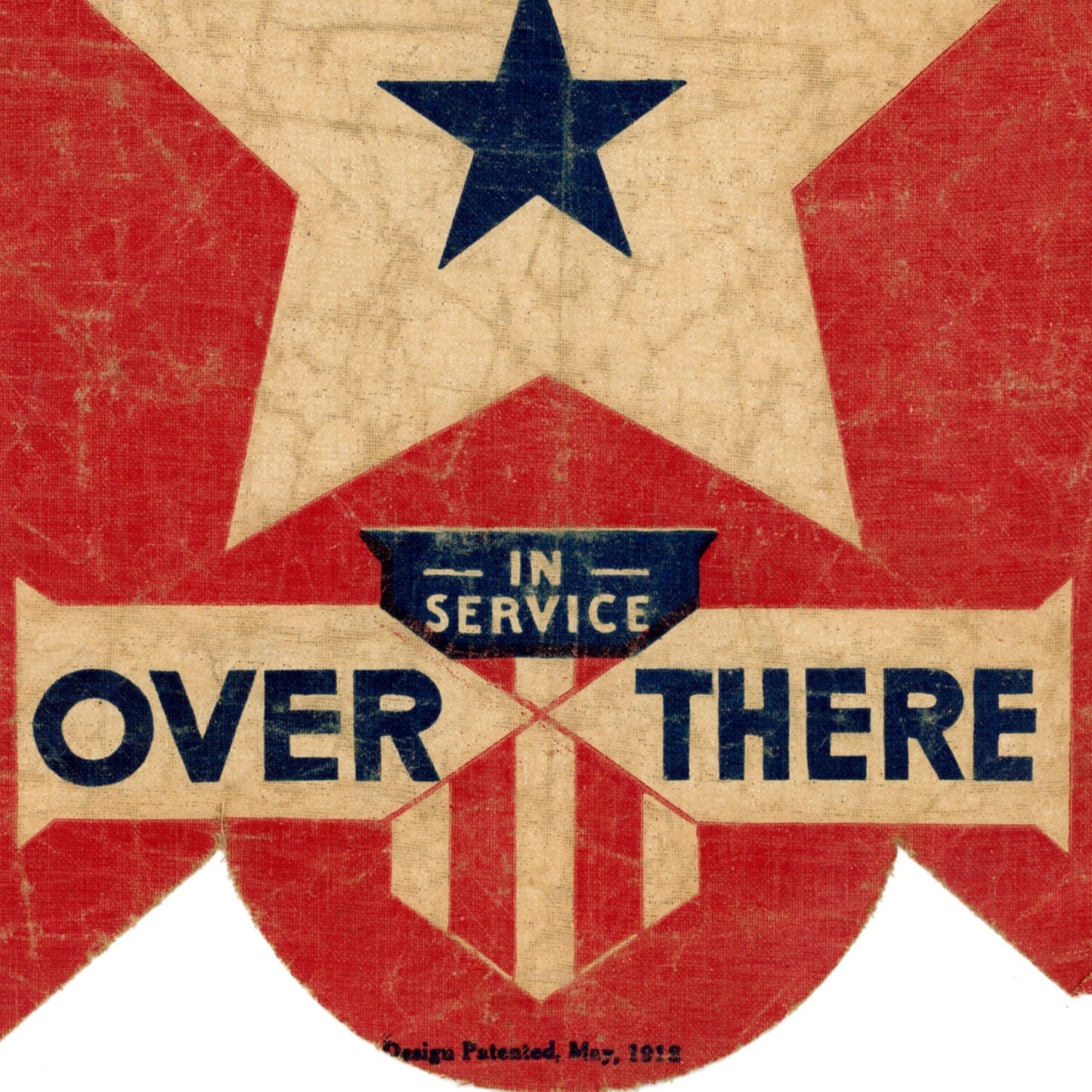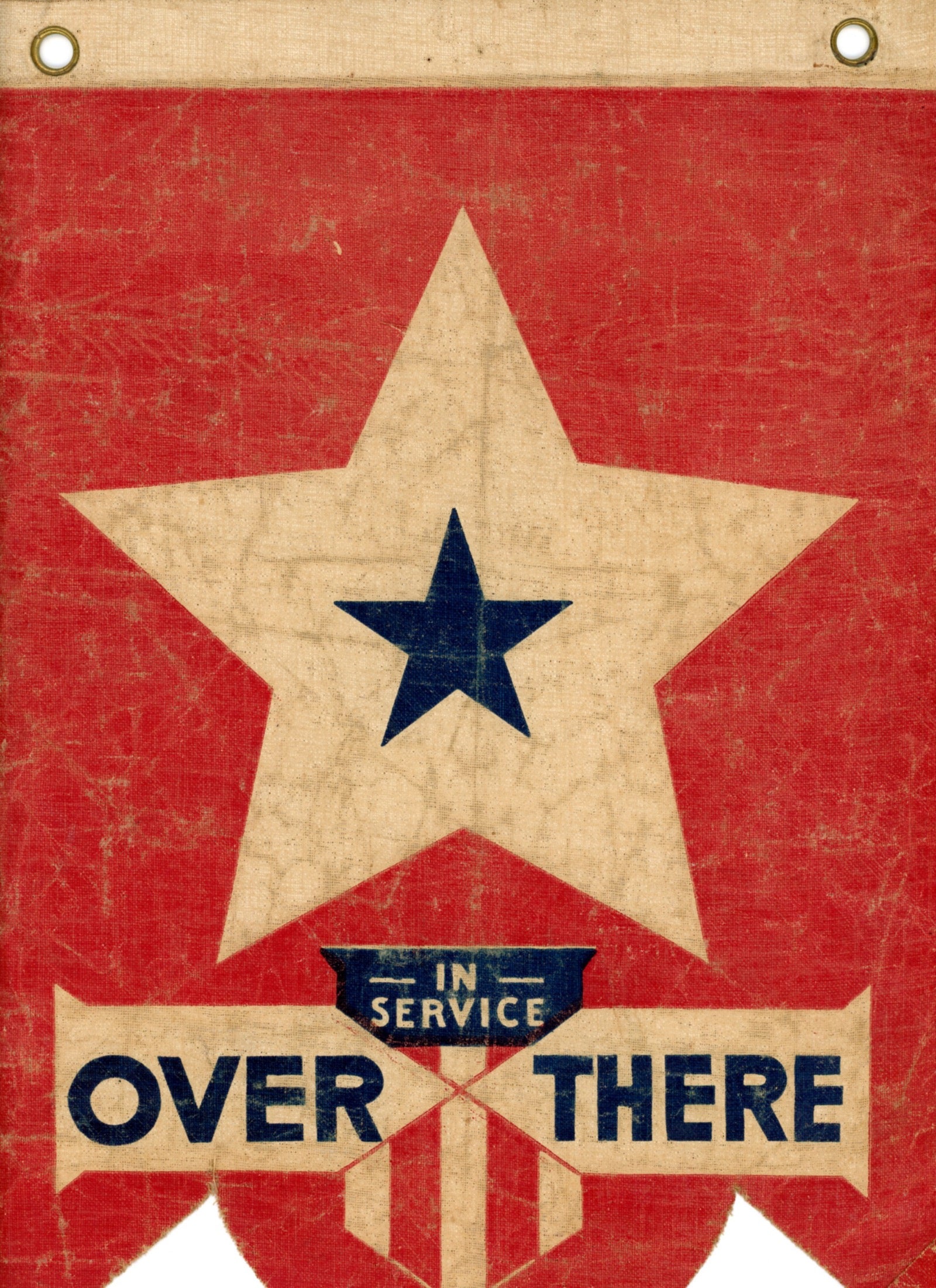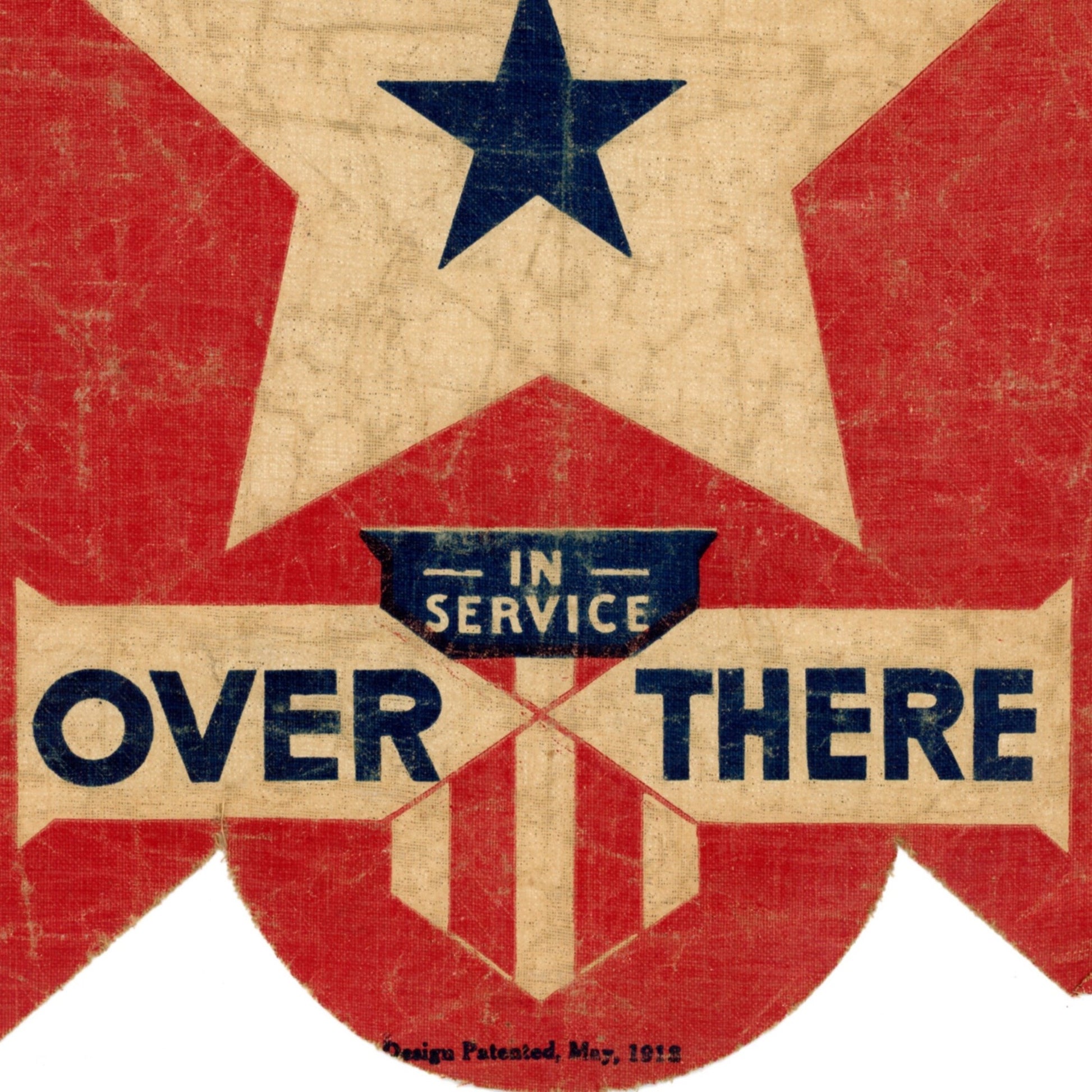Military Collectible
World War I BLUE STAR SERVICE FLAG In Service Over There Design Circa 1918
World War I BLUE STAR SERVICE FLAG In Service Over There Design Circa 1918
Couldn't load pickup availability
Out of stock
Antique SERVICE FLAG from World War I designed with one blue star.
Service Flags, also called Blue Star Flags, were a new display of patriotism during World War I. The popularity spread quickly as families across America displayed Service Flags in their front windows to let passerby's know the sacrifice the family was making to the war effort.
Although many of these flags were handmade by mothers and grandmothers, this particular design was mass produced and incorporated one blue star and the phrase, In Service Over There from the popular patriotic song by George M. Cohan. The words of the chorus "Over there, over there, send the word, send the word over there, that the Yanks are coming..." was meant to instill pride in young men and motivate them to enlist and fight.
This flag measures 12 ½” in length by 9” wide. Two brass grommets are attached to the top for hanging. It does have fading and must not have been stored flat, as on the backside, there is visible fading in the shape of wrinkles.(Please review photos carefully). The bottom edge is stamped, Design Patented May, 1918.
About the Blue Star Service Flag: Army Captain Robert Queissner designed and patented the first Service Flag in 1917 as a way to remember and honor his two sons serving on the front lines. The flag quickly became the unofficial symbol for parents with a child in active military service.
The design was simple, but conveyed much meaning. One or more blue stars, representing hope and pride were centered on a white background surrounded by a red border. The number of stars signified the number of people serving in an active conflict. If a gold star was displayed, it represented sacrifice, indicating that the soldier had died in battle.
We ask that when making your purchasing decision that you consider the photos as part of the item's description.
We ask that when making your purchasing decision that you consider the photos as part of the item's description.
We do our best to provide you within the written description as much information, whether it’s the history, manufacturer, or condition, for each item we sell.
We also recognize that a “picture is worth a thousand words” and ask that you view the photos we provide closely. Often, a photo can be more effective than a written description when determining if an item will meet your needs and satisfaction.
If you need additional information on this or any item, please do not hesitate to reach out.
Share this listing.






